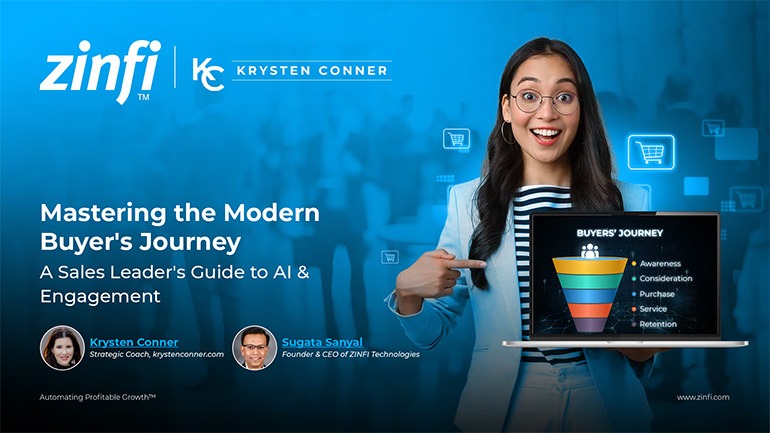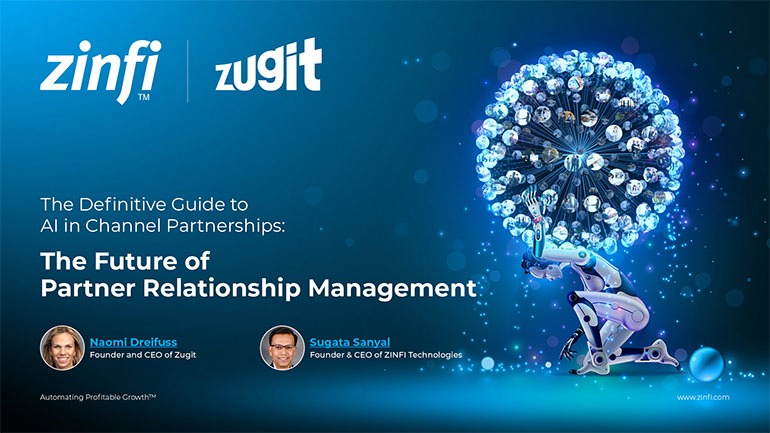Best Practices Articles

Through-Channel Marketing Automation: Must-Haves
Let’s begin this discussion by taking a stab at defining through-channel marketing automation (TCMA). What does it really mean? Basically, it’s about enabling channel partners to generate leads by using marketing assets and a set of marketing tools provided by a vendor or company. The entire purpose of through-channel marketing automation is to enable partners to create brand presence by leveraging the vendor brand and associating it with their own brand, and then driving demand for a set of solutions that include offerings from the vendor.
For a through-channel marketing automation (TCMA) platform to be successful, it must have a core set of application modules. In this article, we’ll take a look at what each of those application modules must be able to do and how they can help you automate processes to drive profitable growth at both the local and the global level.
Before you can begin to market through partners and make them aware of the campaigns and assets and tools are available, you need to be able to set up a partner-facing website. That’s where content management comes in. The website or portal needs to have relevant, up-to-date content, and your team should be able to dynamically manage those web pages facing the partner from a web content management perspective.
Content management and group & user management go hand-in-hand. Once you have created content for users to access, your through-channel marketing automation (TCMA) platform will need to be able to assign groups and users different levels of access depending on the role of those groups and users. Different types of partners will have access to different kinds of content, depending on who they are. You may have global channel marketing people in your own organization who need to access certain parts of the platform relevant to their role, and global sales or marketing people who need access to content uploads and modules for tracking results. You may have agencies at both the global and the local level who need access rights so they can go in directly and upload content. You will also need operational levels of access, whether it’s for channel account managers, partner business managers or solution managers, or for some other job function where people are managing partner entities, such as a dealer network or reseller network, system integrators, VARs, etc. All of these people need to have access to the platform, and you need to be able to define their access rights at various user levels that specify things like which web pages, which integrated tools and which campaigns they can the access. This is complex stuff, and a good automated tool will help you manage the process much more efficiently.
Partner profile management capabilities should address the challenge of setting up dynamic parameters like partner size and specialty, number of technicians, number of salespeople allocated to a product, total number of products sold by a specific partner over the past 12 months, and so on—establishing a set of parameters that can be used to define a partner’s medallion status, such as platinum, gold, silver, bronze and so on. The profile management module of your through-channel marketing automation (TCMA) platform will be critical in ensuring you can dynamically create and manage these groups and assign them to specific sets of content within the portal, as well as the campaigns and other modules that are appropriate for them to access.
Once you’ve taken care of content management, group & user management and partner profile management, you can now focus on setting up lead-generation tools. First among these are digital assets for co-branding. These may include print assets, email templates, event templates, etc. These are assets that partners can co-brand, customize and download for use in an offline system. If you have large partners, chances are they have marketing automation tools like Eloqua, Marketo and ExactTarget, and they may not want to use your through-channel marketing automation (TCMA) platform for demand generation. Your TCMA platform needs to have very robust co-branding and customization capabilities so, for example, they can download a ZIP file of all HTML assets, customize them dynamically and reload those assets into their own marketing automation platform.
However, if you also have partners who don’t have marketing automation tools and require a set of inbound and outbound integrated marketing tools, your through-channel marketing automation (TCMA) platform should be able to provide those. Inbound marketing tools need to have three core capabilities: search, social syndication and web syndication, which will enable your partners to create inbound flow of leads to their own websites or to a set of virtual sites that they use for driving traffic to microsites, etc. Outbound marketing tools need to include multi-touch email marketing capabilities (which send out different emails to prospects to keep them engaged based on various rules, lead scores and so on), microsite marketing capabilities, multi-touch event marketing capabilities and a rapid dialer capability.
(Speaking of rapid dialer, allow me to indulge in a brief digression. It’s curious that very few through-channel marketing automation (TCMA) solutions today integrate rapid dialer. You may think that’s no big deal; however, you should take a closer look. Repeatedly, we have seen that an automated dialing capability substantially increases lead follow-up by partners. If you have a lead distribution & management capability in place or are in the process of implementing one, I’d urge you to explore rapid dialer. If you give a partner a few hundred leads, it’s almost impossible to dial up manually. A rapid dialer platform allows users to plug in with a USB headset and connect to a cloud-based dialing system that will automatically call up those hundreds of leads in a very short period of time. This saves time, increases touch rate, and enhances both customer satisfaction and end user satisfaction. Partners can easily keep track of who they’ve called, who they need to call next and the outcomes of those calls.)
Having a very strong lead distribution & management capability as part of your through-channel marketing automation platform (TCMA) is critical. Partners will need to upload leads or other records into the platform to market to, or they will need to capture leads based on content syndication, search, social and other activities—or you may be distributing leads to them.
Once partners have nurtured or generated leads, those leads are likely to enter a sales funnel, and at that point your through-channel marketing automation (TCMA) platform will require CRM & deal registration capabilities. The ability to efficiently integrate leads into a CRM system is critical, whether partners are integrating leads into their own CRM or TCMA-provided CRM. Using the CRM, the partner should be able to register deals into your existing CRM platform via a single sign-on. Also, if you have partner relationship management (PRM) tools in place, integration with PRM is a critical piece of the marketing automation puzzle.
If you have a marketing development funds (MDF) program but lack MDF tracking capabilities, you will want your through-channel marketing automation (TCMA) platform to track activities like funds uploaded, funds claimed and funds dispersed.
Finally, you will need an analytics tool to provide actionable insights, such as what kind of content is working, what content is not working, which partners are engaging with which programs, which campaigns are working and which are generating the most leads, and how partners are interacting with the content or campaigns as demonstrated by dynamic feedback through star ratings or some other mechanism. You’ll also want to track detailed inbound metrics that show many leads have been generated from search, social and web syndication, and how many outbound engagements have occurred through email marketing, white paper downloads, webinars and other types of asset interactions with prospects. These metrics can be used to compile lead scores and help you gain a more nuanced understanding of how your assets and campaigns perform for specific market segments. Your through-channel marketing automation platform (TCMA) business analytics capability should also give you partner adoption rates, and allow you to integrate partner activities to demand generation activities to build complete understanding of what’s driving your ROI.
As you can probably tell from this list of core capabilities, through-channel marketing automation (TCMA) platforms have evolved significantly in the recent years. If you considered a TCMA tool a few years ago but didn’t follow through, or even if you procured a TCMA solution at that time, it may make sense to start looking again. Take a look at what’s out there, how it can substantially streamline your channel marketing activities and workflow, reduce cost exponentially, increase lead generation and deal registration, and build out the sales pipeline rapidly.
ZINFI is a leader in TCMA space, and is the only provider that offers a complete end-to-end unified partner management solution comprising partner relationship management (PRM), partner marketing management (PMM) and sales enablement management (SEM). You don’t need to automate everything in a single day. However, you should have a multi-quarter ramp and maturity plan before you procure and begin to deploy a state-of-the-art through-channel marketing automation (TCMA) solution like ZINFI’s. Therefore, as you enter into this process, make sure your TCMA vendor has a consulting arm that can guide you carefully through best practices, so you can be sure that you learn from the previous deployments of companies similar to yours in size or complexity or specialty. When companies deploy in the right way, however, we have repeatedly seen substantial increases in channel marketing ROI, reduced workloads, increased visibility and increased partner engagement and satisfaction.
Best Practices Guidebook
 Modernizing Channel Marketing: AI and Ecosystem Enablement Best Practices
Modernizing Channel Marketing: AI and Ecosystem Enablement Best PracticesDownload for FREE
 The Channel’s Shift to Partner-Led With AI Best Practices
The Channel’s Shift to Partner-Led With AI Best PracticesDownload for FREE
 Hyperscalers, ISVs, and AI: Shaping the Future of B2B Software Distribution
Hyperscalers, ISVs, and AI: Shaping the Future of B2B Software DistributionDownload for FREE
 Definitive Guide to a Partner Ecosystem-First Sales Strategy
Definitive Guide to a Partner Ecosystem-First Sales StrategyDownload for FREE
 The Partner-Led Digital and AI Transformation Best Practices
The Partner-Led Digital and AI Transformation Best PracticesDownload for FREE
 Startup Talent Recruitment: Hiring Missionaries, Not Mercenaries
Startup Talent Recruitment: Hiring Missionaries, Not MercenariesDownload for FREE
 The Future of Partner Relationship Management with AI in Partnerships
The Future of Partner Relationship Management with AI in PartnershipsDownload for FREE
 Cybersecurity for the 99%: Strategies from the Frontline
Cybersecurity for the 99%: Strategies from the FrontlineDownload for FREE
 Mastering Partner Relationships: A Strategic Approach to Business Growth
Mastering Partner Relationships: A Strategic Approach to Business GrowthDownload for FREE
 Mastering Partner Relationship Management: Keys to SaaS Channel Success
Mastering Partner Relationship Management: Keys to SaaS Channel SuccessDownload for FREE
 Navigating the AI Revolution: Guide for Partners in the Microsoft Ecosystem
Navigating the AI Revolution: Guide for Partners in the Microsoft EcosystemDownload for FREE
 Mastering the Modern Buyers Journey: Sales Leader’s Guide to AI & Engagement
Mastering the Modern Buyers Journey: Sales Leader’s Guide to AI & EngagementDownload for FREE










